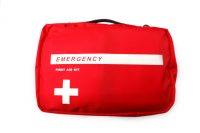Category: Special Topics in Safety Management
Safety is a process, and as such, needs to be managed. This section offers resources to create a viable safety program, sell it to senior management, train supervisors and employees in using it, and then track and report your progress. Look also for ways to advance your own skills in these areas, both for your current job, and those that follow.
Free Special Report: 50 Tips for More Effective Safety Training
In October 2009, the General Accounting Office issued a scathing report criticizing OSHA for undercounting work-related injuries and illnesses. As a result of that report and other factors, OSHA has stepped up enforcement of its injury and illness recordkeeping and reporting requirements. Because of this increased emphasis, employers need to take extra care in determining […]
On December 11, 2010, boxmaker Beverly Brown was walking down a vertical staircase at a Wayne Farms chicken processing plant in Decatur, Alabama, when she lost her balance and fell. Her only obvious injury was a cut on her lip, so Brown was taken to the plant’s medical room, where she was given an antibiotic […]
Employers have a great deal of flexibility in designing wellness programs under the Affordable Care Act (ACA)—but there are also some pitfalls to avoid, and most of them involve laws that predate the ACA. Some employees who are subject to more stringent wellness program requirements designed by their employers under the ACA are suing—successfully—for discrimination […]
Wellness programs are proliferating under the Affordable Care Act, which increased the available incentive and penalty options for employers. And, they look like a win-win—workers win, because the company funds the initiative that improves their health status. Employers win, because healthier employees are happier, more productive, and less likely to suffer injuries and illnesses. Unfortunately, […]
A well-managed program that returns injured workers to their jobs—even in a temporarily reduced capacity—is a win-win for employers and workers. For employers, it reduces the cost of workers’ compensation claims and disability benefits, increases workplace productivity and morale, and decreases turnover. For employees, it can be even more important: A light-duty assignment or appropriate […]
Is your workforce ailing? Maybe one employee who’s out hurt his back cleaning gutters at home, another went ahead and had that elective foot surgery she’d been putting off, and another is out on a workers’ compensation claim after slipping in mud. It would be good to have them back on the payroll doing something […]
Temporary workers are a high-risk group for serious injuries and illnesses. One way to help ensure that they don’t fall through the cracks between the leasing agency’s safety program and the host employer’s safety program is for both employers to implement an effective I2P2 program. Yesterday, we looked at the regulatory requirements that cover I2P2 […]
Sometimes, two heads are better than one. It ought to be that way with temporary workers, who have essentially two employers, both of whom are supposed to be looking out for their safety. But in practice, miscommunication and poorly defined responsibilities lead to gaps in worker training, hazard identification, and supervision that have served to […]
Yesterday, we looked at OSHA’s answers to some employers’ questions about training certification and LOTO verification. Today, we’ll look at what OSHA has to say about workers performing maintenance on plug-and-cord-connected equipment covered under an exception in the LOTO rules. Employers often write to OSHA asking for clarifications of its requirements. Sometimes, OSHA writes back. […]
Here’s a question: Your employees carry identification badges that identify the individual employee when it is swiped on an electronic reader. The badges are used for workplace security, documenting time on the clock, and recording attendance in training classes. The badge-swiping system identifies individual employees, but is not equivalent to an “electronic signature.” Is it […]










